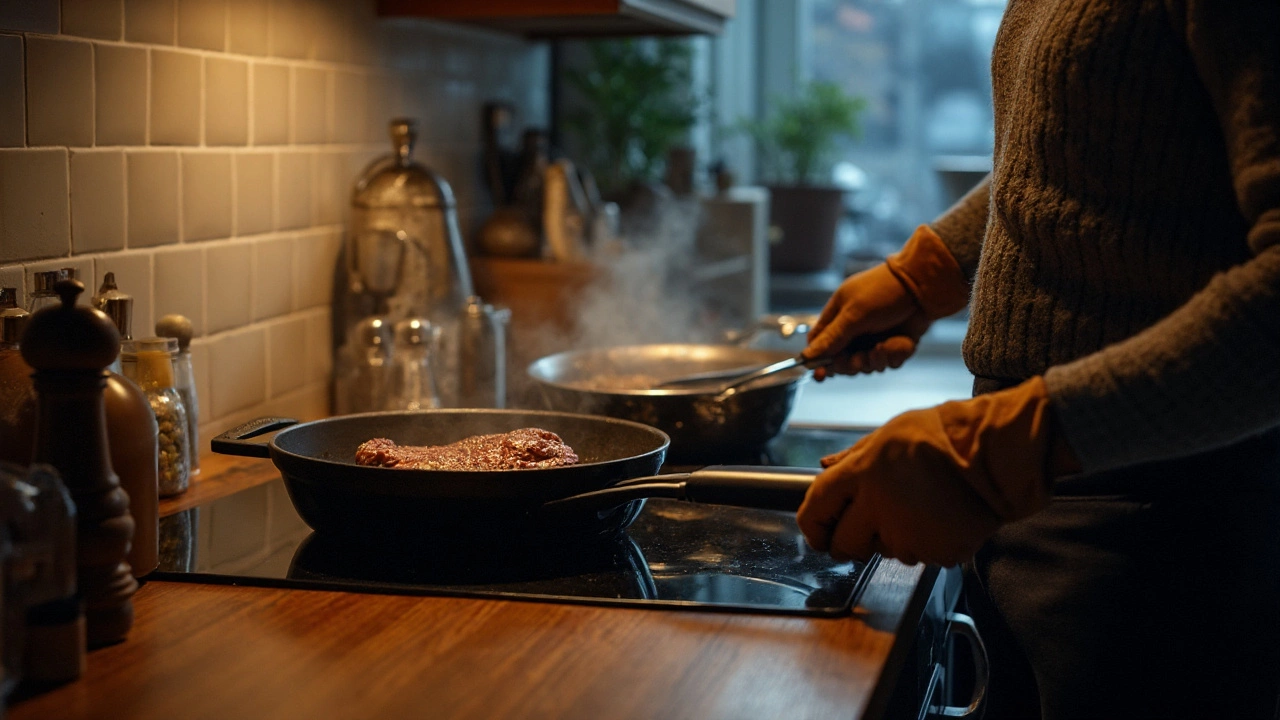Cast Iron vs Stainless Steel: What Makes Each One Tick
If you’re standing in the kitchen aisle wondering whether to grab a cast‑iron skillet or a stainless‑steel pan, you’re not alone. Both types promise great results, but they behave very differently once they hit the stove. Below we break down the key points so you can decide which metal fits your cooking style.
Heat performance and cooking results
Cast iron is a heavyweight champion when it comes to holding heat. It takes a few minutes to warm up, but once it’s hot, the temperature stays steady even if you add cold food. That makes it perfect for searing steaks, frying chicken, or baking cornbread. Stainless steel, on the other hand, heats up fast and cools quickly. It’s great for dishes that need quick temperature changes, like sautéing vegetables or deglazing a pan with wine.
Because cast iron spreads heat unevenly, you’ll often need to pre‑heat the whole surface and use a bit more oil to prevent sticking. Stainless steel conducts heat more evenly across the base, so food is less likely to develop hot spots. If you love a crispy crust and don’t mind a little extra oil, cast iron wins. If you prefer a lighter touch and more precise control, go stainless.
Durability, maintenance, and everyday use
Both metals are tough, but they ask for different care. Cast iron can last a lifetime if you season it regularly—rubbing it with a thin layer of oil after each wash builds a non‑stick layer and protects against rust. It’s okay to wash it with hot water; never use harsh soap unless you plan to reseason it.
Stainless steel is virtually rust‑proof and can survive a dishwasher cycle, making it a low‑maintenance choice. However, it can develop stubborn stains or discoloration if you overheat it. A quick wipe with a non‑abrasive cleaner usually does the trick.
Weight is another factor. Cast iron is heavy; you’ll feel the difference when you lift a skillet full of food. Stainless steel is lighter and easier to handle, especially for big batches or when you need to toss ingredients around.
Price-wise, you’ll find a basic stainless‑steel pan for less than a budget cast‑iron skillet, but high‑end stainless sets can out‑price mid‑range cast iron. Think about how often you’ll use each piece and whether the upfront cost matches your cooking habits.
In short, if you love dishes that need solid heat retention—like fried chicken, deep‑dish pizza, or skillet‑baked desserts—cast iron is your go‑to. If you need speed, easy clean‑up, and flexibility for quick sautés or sauces, stainless steel is the better pick. Many cooks keep both: a heavy skillet for steaks and a light pan for everyday stir‑fries.
Next time you shop, hold the pans, feel the weight, and picture the meals you want to make. The right choice isn’t about “better”; it’s about what matches your kitchen routine. Happy cooking!
Cast iron or stainless steel? Clear, evidence-backed guide to pick the right pan for searing, sauces, eggs, and everyday cooking-plus care, safety, and buying tips.
Sep, 5 2025
